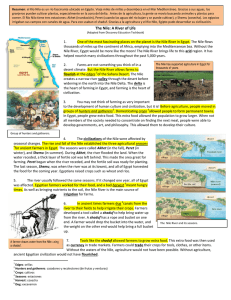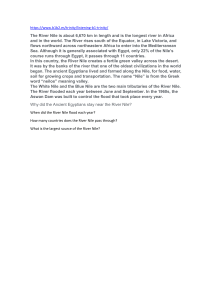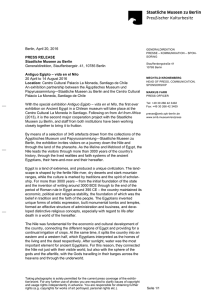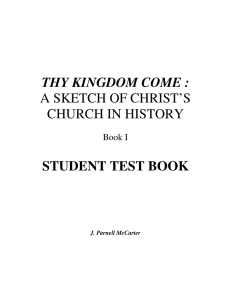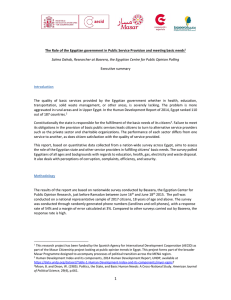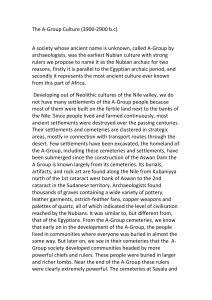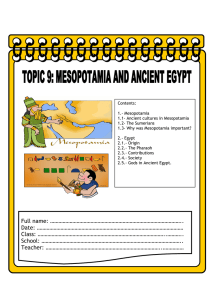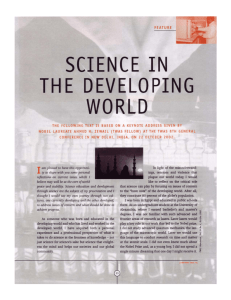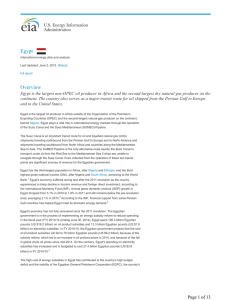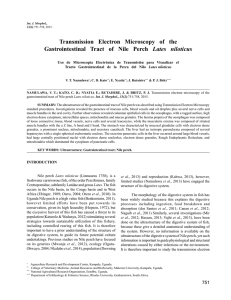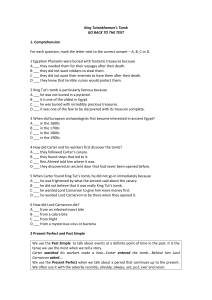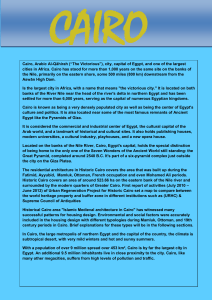Ancient civilizations
Anuncio
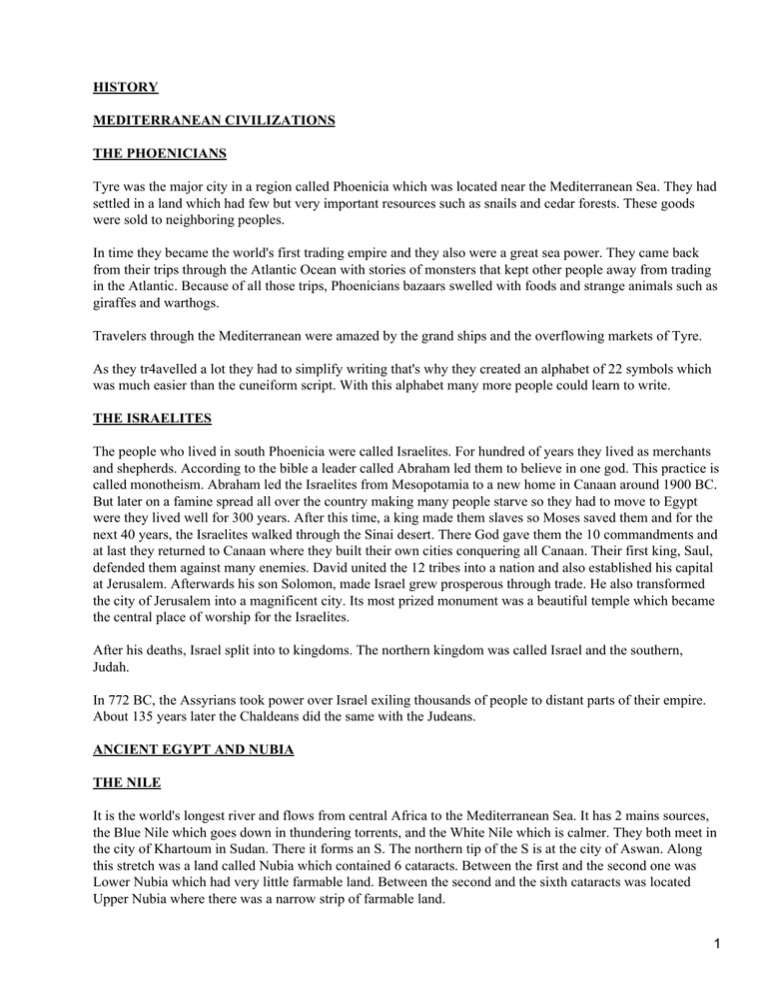
HISTORY MEDITERRANEAN CIVILIZATIONS THE PHOENICIANS Tyre was the major city in a region called Phoenicia which was located near the Mediterranean Sea. They had settled in a land which had few but very important resources such as snails and cedar forests. These goods were sold to neighboring peoples. In time they became the world's first trading empire and they also were a great sea power. They came back from their trips through the Atlantic Ocean with stories of monsters that kept other people away from trading in the Atlantic. Because of all those trips, Phoenicians bazaars swelled with foods and strange animals such as giraffes and warthogs. Travelers through the Mediterranean were amazed by the grand ships and the overflowing markets of Tyre. As they tr4avelled a lot they had to simplify writing that's why they created an alphabet of 22 symbols which was much easier than the cuneiform script. With this alphabet many more people could learn to write. THE ISRAELITES The people who lived in south Phoenicia were called Israelites. For hundred of years they lived as merchants and shepherds. According to the bible a leader called Abraham led them to believe in one god. This practice is called monotheism. Abraham led the Israelites from Mesopotamia to a new home in Canaan around 1900 BC. But later on a famine spread all over the country making many people starve so they had to move to Egypt were they lived well for 300 years. After this time, a king made them slaves so Moses saved them and for the next 40 years, the Israelites walked through the Sinai desert. There God gave them the 10 commandments and at last they returned to Canaan where they built their own cities conquering all Canaan. Their first king, Saul, defended them against many enemies. David united the 12 tribes into a nation and also established his capital at Jerusalem. Afterwards his son Solomon, made Israel grew prosperous through trade. He also transformed the city of Jerusalem into a magnificent city. Its most prized monument was a beautiful temple which became the central place of worship for the Israelites. After his deaths, Israel split into to kingdoms. The northern kingdom was called Israel and the southern, Judah. In 772 BC, the Assyrians took power over Israel exiling thousands of people to distant parts of their empire. About 135 years later the Chaldeans did the same with the Judeans. ANCIENT EGYPT AND NUBIA THE NILE It is the world's longest river and flows from central Africa to the Mediterranean Sea. It has 2 mains sources, the Blue Nile which goes down in thundering torrents, and the White Nile which is calmer. They both meet in the city of Khartoum in Sudan. There it forms an S. The northern tip of the S is at the city of Aswan. Along this stretch was a land called Nubia which contained 6 cataracts. Between the first and the second one was Lower Nubia which had very little farmable land. Between the second and the sixth cataracts was located Upper Nubia where there was a narrow strip of farmable land. 1 The ancient Egyptian section of the Nile ran from Aswan to the Mediterranean Sea and it passed through a region called Upper Egypt. In the north the Nile spread out to form a fertile area called Lower Egypt. At the end of the Nile in the north, the river split into several streams that flowed to the Mediterranean Sea forming a delta which contained very fertile farmland. Every spring, water came down from the highlands carrying fertile soil called silt. When it flooded the dry land, it deposited a thick layer of silt which was ideal for farming. In gratitude the Egyptians praise Hapi, the god of the Nile. The ancient Egyptians called their land KEMET, the black land, because of the dark soil left by the Nile's floods. Beyond the fertile river banks lay the red land which was a desert area which protect them form the attack of other countries. But there were other ways of getting to Egypt. Communities appeared in the Nile delta by around 4000 BC. They built their houses of straw or bricks made from a mix of mud and straw. The first Nubian communities emerged around 3800 BC. The Nile was a highway for trade because ships could go downriver because the Nile flowed north. But they could also go upriver because the winds blew south. That's why they were very good traders. Because of the cataracts people couldn't pass through Nubia so they developed trade routs over land which made them famous. EGYPT Egypt had 31 dynasties until a Greek ruler, Alexander the great, conquered it in 332 BC. Historians group Egypt's dynasties into 3 periods: OLD KINGDOM [ 2700 − 2400 BC] (builder began to build the great pyramid & the statue of Sphinx) According to the legend Egypt's first dynasty began when a king named Menes united Upper and Lower Egypt and formed the city of Memphis, from where e ruled over the 2 lands. The pharaohs had absolute power and were also religious leaders. Egypt grew during its 1st 6 dynasties. They kept the peace and trade with Nubia and they found timber in the coast of Mediterranean which was use for construction. About 2250 BC Egypt's unity crumbled and the dynasties grew weak. MIDDLE KINGDOM [ 2040 − 1786 BC] ( Egypt expand into lower Nubia, literature and art flourish & Senusret III makes the government stronger) The early dynasties of the Middle kingdom put order and reunited the country. They worked at irrigation projects and built a canal between the Nile and the red sea. Egypt grew even richer. But they lost control of the country to foreign invaders. NEW KINGDOM [1570 − 1085] (The queen Hatshepsut and the king Tut rule & Ramses II expands Egyptian territory) Egyptian princes became strong enough to drive out the invaders around 1550 BC. This was the start of the new kingdom, whose first pharaohs wanted to build an empire. They also created a huge army which was nearly unbeatable. Around 1500 BC a child named Thutmose III became pharaoh but as he was too little to rule, his step mother, 2 Hatshepsut was appointed as a regent. She then proclaimed herself pharaoh and when Thutmose was old enough to rule she refused to yield the throne so Thutmose took over when she died. He was one of the greatest pharaohs of the new kingdom. Apart from being a conqueror, he loved plants and treated defeated peoples with mercy. In around1075 BC civil war left Egypt weak and poorly defended so in 332 BC it was conquered by Alexander the Great. 300 years later it was captured by the Romans and Egypt would not govern itself for almost 2000 years. PHOENICIANS they invented the first alphabet ISRAELITES first monotheism country LYDIANS first money coined HATSHEPSUT Her statue looks like the face of powerful king because the title of pharaoh traditionally referred to a man. That's why Hatshepsut appears with bear. She ruled Egypt during the new kingdom because when Thutmose became pharaoh Hatshepsut, his stepmother, was appointed regent. She then proclaimed herself pharaoh and when Thutmose was old enough to rule she refused to yield the throne so she ruled until she died. She is most known for creating a time of peace and economic success. She encouraged trade with faraway places, sending a famous expedition to the land of Punt, Africa. 3
